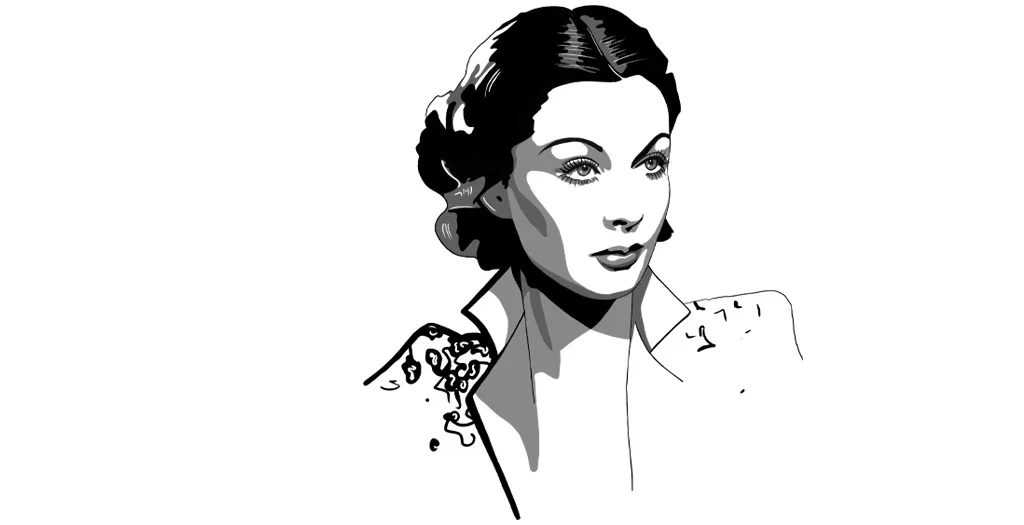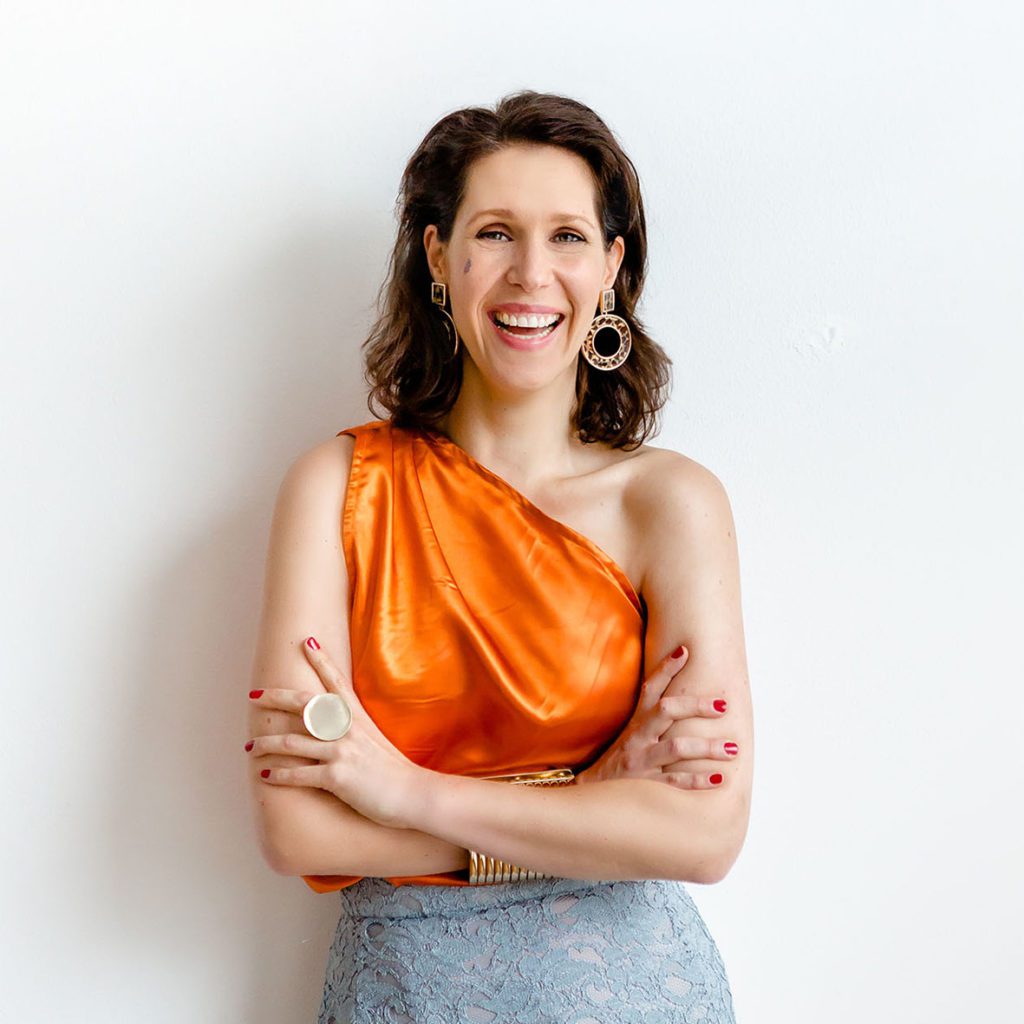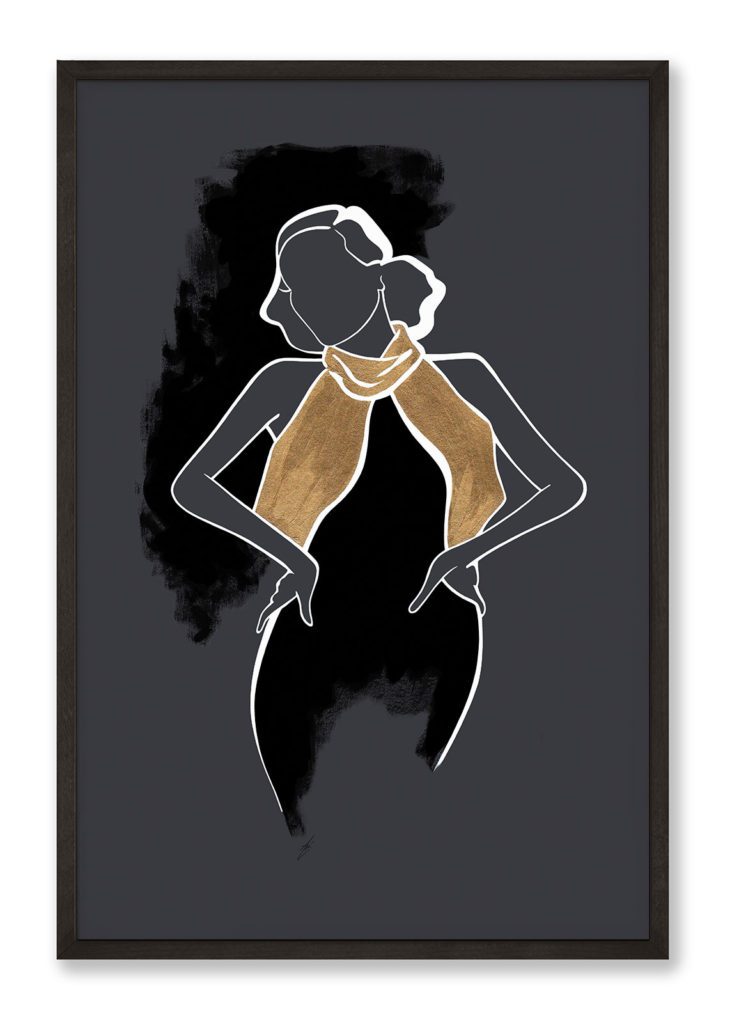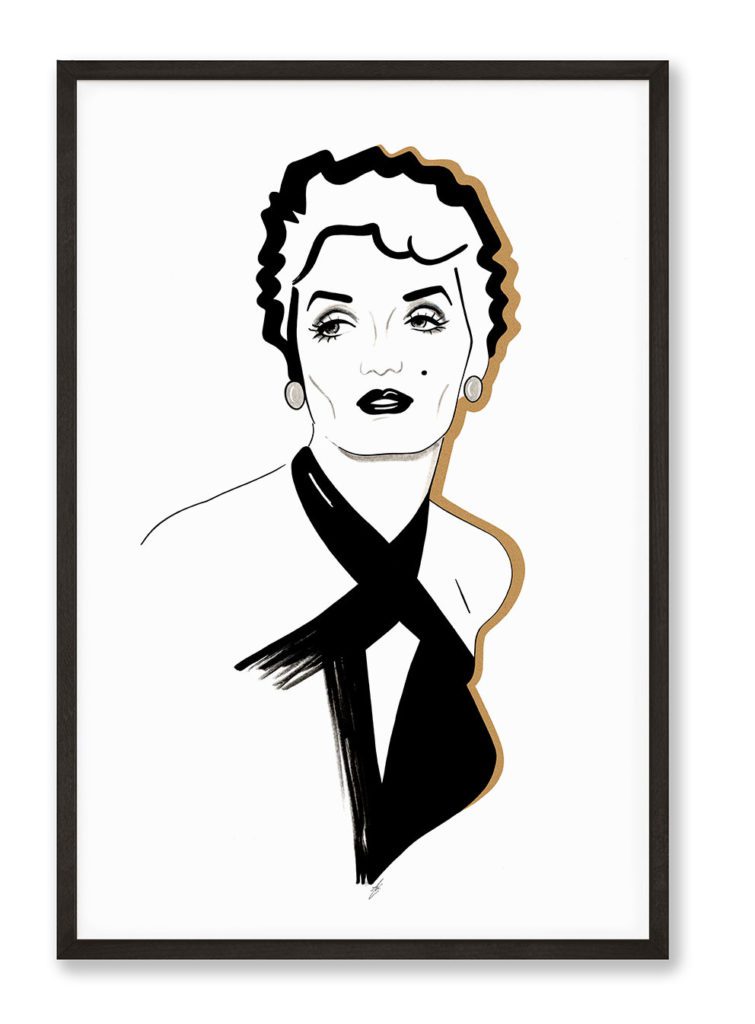Vivien Leigh
Scarlett O'Hara, Vivien Lady Olivier and the 16th greatest film actress of classic American cinema




Hi, I'm Kat!
What I am most passionate about is to inspire you to see that your life is your own and biggest masterpiece.
Vivien Leigh will forever be Scarlett O’Hara in the minds of many moviegoers. But she is also Vivien, Lady Olivier and the 16th-great female movie star of classic Hollywood cinema.
LISTEN TO THE PODCAST
SUBSCRIBE TO THE PODCAST
Beginnings
Vivian Mary Hartley was born on November 5, 1913 in Darjeeling, British India. Her ancestry is quite interesting: Whilst her father Ernest was was born in Scotland, her mother Gertrude had been born in Darjeeling as well as probably was of Irish, Parsi Indian and Armenian ancestry.
Vivian’s mother led an amateur theatre group and Vivian had her first stage appearance here when she was only three years old, reciting „Little Bo Peep“. From an early age on, Gertrude tried to instill a love of literature in Vivian and introduced her to the works of Lewis Carroll, Rudyard Kipling, Hand Christian Andersen as well as Greek mythology and Indian folklore.
At the age of six, Vivian was sent to the Convent of the Sacred Heart in Roehampton in south-west London. Fun fact: Her best friend at this school was Maureen O’Sullivan, who played Jane opposite Johnny Weissmüller in the Tarzan movies. And it was to Maureen that young Vivian confided that she wanted to become „a great actress“. When she was a young teen, her parents took her out of school and travelled across Europe with her for a couple of years. Vivian would attend various schools during that time. Her stays in Dinard, Biarritz in Paris as well as her stay in San Remo on the Italian Riviera made her fluent in both French and Italian. When 17 year old Vivian returned with her parents to London in 1931, she would see her friend Maureen perform in the play „A Connecticut Yankee“ in London’s West End. She told her parents about her desire to become an actress – and her father enrolled her at the Royal Academy of Dramatic Art in London. Her studies did not last long though – she met her first husband Herbert Leigh Holman during her first year and ended her studies when they got married in 1932.
Start as a professional actress
Although Vivian had ended her studies, friends suggested she’d take on a minor role in a movie as an uncredited extra – which Vivian did in the film „Things Are Looking Up“ in 1935, aged 22. She also enlisted the help of agent John Gliddon, who was the one suggesting a name change as he deemed „Vivian Holman“ not suitable as an actress’s name. That’s when her stage name „Vivian Leigh“ was created. It was also Gliddon who recommended her to director Alexander Korda, but Korda rejected her because of lacking potential.
Nevertheless, Vivian Leigh was cast in the play „The Mask of Virtue“ that same year. She received raving reviews, was interviewed and newspaper articles were written about her. Amongst other things she was hailed as „the essence of English girlhood“ and one of her characteristics was written about as early as that year as an interviewer noted that „a lightning change came over her face“, indicating her rapid changes of mood. The play was also the reason for Vivian changing the spelling of her name from Vivian with an „a“ to Vivien with an „e“ as director Sydney Carroll spelt it that way in the playbill.
The role of Ophelia opposite Laurence Olivier in a stage production in Denmark followed as well as a part in the 1938 movie „A Yank at Oxford“ with co-stars Robert Taylor, Lionel Barrymore and Maureen O’Sullivan followed. The latter was the first of Vivian Leigh’s films to be recognized by American audiences and got her known on the other side of the Atlantic.
Gone with the Wind
It was as early as 1937, when Vivien had only been active in the movies for two years and when she conducted an affair with Laurence Olivier during the filming of „Fire Over England“ that she read the novel„Goes with the Wind“ by Margaret Mitchell and told her American agent to recommend her to David O. Selznick who apparently was planning a film version of the book. She was so confident in being right for the role that she even declared to journalists that she cast herself as Scarlett O’Hara and that she will play the Southern belle whilst Olivier who was definitely a contender for the role of Rhett Butler would not be chosen.
Coincidentally, Vivien Leigh’s American theatrical agent was none other than Myron Selznick, David O. Selznick’s brother, the latter being the producer of „Gone with the Wind“. In 1938, Vivien Leigh asked her agent Selznick to be considered for the role of Scarlett, when the wild search for the perfect Scarlett O’Hara was underway. And indeed, David O. Selznick did screen her performances in „Fire Over England“ and in „A Yank at Oxford“. His verdict: Leigh was excellent – but in no way a Scarlett, because she was way „too British“.
Coincidence was on Vivien’s side. Her partner Laurence Olivier was over in Los Angeles and Leigh travelled to be with him. She met with her agent Selznick, who was also Olivier’s – and he knew right away that she was the actress his brother was searching for. Apparently, Myron took Vivien with him to the filming set and presented her to his brother David with the words „Hey, genius, meet your Scarlett O’Hara.“ A screen test was organized and both producer Selznick and director George Cukor praised her performance. Selznick apparently wrote to his wife: „She’s the Scarlett dark horse and looks damn good.“ And Cukor would laude her „incredible wildness“. Soon after, Vivien Leigh became officially Scarlett O’Hara. The movie would catapult her to instant stardom and make her a „film star“ known allover the world.
Leigh-Olivier Collaborations
When Vivien Leigh was finally free to marry Laurence Olivier in 1940, they could freely move as a couple from then on and would also try and collaborate on as many projects as possible.
When it came to movies, their initiatives were initially not very successful. When Olivier was cast as the lead in Hitchcock’s Rebecca, Leigh wanted to co-star. But Selznick, Hitchcock and even Leigh’s mentor, George Cukor, agreed that she did not seem right „as to sincerity or age or innocence“. Neither was Leigh cast in Pride and Prejudice opposite Olivier and 1940’s „Waterloo Bridge“ starred Leigh, but Robert Taylor instead of Laurence Olivier.
As the movies did not prove very successful in their attempt to work together, the Oliviers turned back to theatre and produced „Romeo and Juliet“ for Broadway with their own savings. Unfortunately, though, the play did not become a success. They were met with a lot of hostility by the New York press – first, because of the adulterous nature of their relationships’s beginning, which was heavily publicized and critiqued, and second, because they were staying in the US and not returning to the UK to help with the war effort. In addition to this, their performances were smashed and they lost almost all their money in this project.
Fortunately, the next movie they starred in next, was a success – „That Hamilton Woman“. Winston Churchill was a fan of the movie and Leigh and Olivier became his favorites. They would attend dinners and occasions at his request as long as he lived.
Leigh and Olivier returned to Britain and would join the war effort – Laurence in the army, Vivien touring North Africa to entertain the troops. It was there that she fell ill with tuberculosis in the left lung and had to spend several weeks in the hospital. When she had recovered enough, she resumed work as an actress – successful in the stage production of „The Skin of Our Teeth“ in London, rather unsuccessful in the movies „Caesar and Cleopatra“ as well as „Anna Karenina“.
The most straining engagements of their marriage was their six-month tour of Australia and New Zealand in 1948. At that time, Laurence Olivier was on the board of directors for the Old Vic Theatre and they went overseas to try and raise funds for the theatre. The two would perform „The School for Scandal“, „The Skin of Our Teeth“ and „Richard III“ and the show tour was a full success. But the tour was emotionally and physically demanding on both Olivier and Leigh. Olivier would say to a journalist during the end of the tour: „You may not know it, but you are talking to a couple of walking corpses.“ The tour was especially draining for Vivien Leigh, who would suffer from insomnia and allow her understudy to take over. Laurence Olivier would later remark that he lost Vivien in Australia. Back in Europe, they staged the three plays they performed in Australia and Antigone on top of it.
A Streetcar Named Desire
What came next was another of Vivien Leigh’s most successful and iconic roles – the one Blanche Dubois in Tennessee William’s „A Streetcar Named Desire“. First, she performed it in 326 shows under the direction of husband Laurence Olivier in London’s West End before she was cast for Elia Kazan’s movie version opposite Marlon Brando. In the beginning, Elia Kazan did not think much of Vivian Leigh and didn’t like the way Oliver and her had shaped the character. But at the end of filming, he adored and appreciated her for „the greatest determination to excel of any actress he’d ever known. She’d have crawled over broken glass if she thought it would help her performance.“ Leigh won her second Oscar for the role, a BAFTA Awards for Best British Actress as well as a New York Film Critics Circle Award for Best Actress.
Mental Health & Death
It was as early as 1938 when it became first apparent that Vivien Leigh had some troubles. It was during the production of Hamlet in Denmark opposite Laurence Olivier that she had one of her famous sudden mood changes right before she was set to go onstage. Without any provocation or apparent trigger, Leigh began screaming at Olivier and then all of a sudden would go silent and stare into space. Her performance that day was without fault and she would not be able to recollect this incident the day after.
Very early on, in 1938, during the filming of „A Yank of Oxford“, Leigh developed her reputation of being difficult and unreasonable. She disliked her minor role and she was acting up off-screen. She was even threatened by director Korda with a lawsuit if she did not improve her behavior. Apparently she did so because she was still cast in other movies afterwards like for example „Sidewalks of London“.
It was in 1945, during the filming of Leigh’s unsuccessful movie „Cleopatra“ when she discovered that she was pregnant but then had a miscarriage. This triggered one of her first major bipolar disorder breakdowns. The process always being the same: First, several days or weeks of hyperactivity, then a period of depression and then an explosive breakdown, of which Leigh would have no memory of afterwards. It was scary for both Olivier and Leigh in a time that this disorder was not known well enough nor understood.
Her straining tour through Australia as well as the demands put on her during the time being on stage and filming „A Streetcar Names Desire“ had a detrimental effect on Leigh’s mental health. In 1951, Leigh and Oliver performed „Antony and Cleopatra“ as well as „Caesar and Cleopatra“, first I London, then on Broadway. Leigh, in her fragile mental state, was terrified of failure and was taken by a bad critic. When she finally travelled to Ceylon in 1953 to begin filming „Elephant“ walk, she suffered a mental breakdown and had to be replaced by Elizabeth Taylor. Her nervous breakdown was more than you might imagine at this very moment. According to her biography she started showing signs of psychosis and hallucinating and lost any semblance of rationality. As the LA Times reported: „Actress Vivien Leigh, weeping hysterically, was dragged from an automobile to a transatlantic plane today by her husband, Sir Laurence Olivier, after she delayed the flight for 20 minutes. The British actress, suffering a nervous breakdown and what a physician called a fear of flying, alternately sobbed and shook her fist at her husband until he grabbed one of her arms and pulled her from a limousine and up the ramp to the plane floor.“ When they arrived in London, they were greeted by four doctors and two ambulances. It took several months for Leigh to recover. She received electroconvulsive therapy and remained unconscious for four days. When she woke up, another manic episode took place. She was sedated and kept in a coma for two weeks. It took months for Vivien Leigh to recover. During this time, Laurence Olivier said: “She was not, now that she had been given the treatment, the same girl that I had fallen in love with,” he wrote. “She was now more of a stranger to me than I could ever have imagined possible.“
In 1958, Vivien Leigh miscarried a second time and fell into a state of deep depression, which lasted several months. She accompanied husband Laurence on his European tour of Titus Andronicus, but was known to have frequent outbursts against Laurence as well as other cast member. After their return to London, her first husband Leigh Holman would stay with Laurence Olivier and Vivian Leigh. He still had some influence on Vivien and would help calm her down.
After divorcing Olivier in 1960, she went on a tour of Australia, New Zealand and Latin America for almost 10 months and received great reviews. She continued with theatre work, even receiving a Tony Award for Best Actress in a Musical for her role in Tovarich, and did some movie work, like for example „Ship of Fools“. Especially the latter was emotionally draining for her. So much so, that she hit co-star Lee Marvin so hard with a spiked show that it marked his face.
It was in 1967, when rehearsing for „A Delicate Balance“ opposite Michael Redgrave that Vivien Leigh’s tuberculosis resurfaced. She rested, but died died on July 8, 1967. That night, her partner Jack Merivale was at site and, amongst others, called Laurend Olivier to the scene, who would pay his respects, pray and help Merivale make funeral arrangements. He stayed until her body was removed from the flat. When her death was publicly announced, lights were extinguished for an hour in all of London’s theaters.
Relationships
Herbert Leigh Holman (husband #1) – Vivian met Herbert the same year that she enrolled in the Royal Academy of Dramatic Art in her quest to become an actress. Herbert was 13 years her senior and generally disapproved of „theatrical people“. Nevertheless, one year later, 18 year-old Vivian got married and ended her studies at the academy. Another year later, when she was 19 years old, she gave birth to their daughter Suzanne.
Laurence Olivier (husband #2) – These two were the first global celebrity couple since the advent of sound and had one of the most passionate relationships I have ever heard of. As biographer Stephen Galloway puts it: „Their passion was famous, but this was not the soft, sentinel kind of Hollywood movies – it was the sort that engulfs, overwhelms and sometimes destroys.“
Ten months after giving birth to her daughter Suzanne, Vivien saw Laurence Olivier performing on stage and would comment to her friend that night: „That’s the man I’m going to marry.“ – despite being a new mom and a wife already. In 1935, only three years into her first marriage to Holman, Vivien insisted that her co-star John Buckmaster would introduce her to Laurence Olivier, whom they met at the Savoy Grill, where Olivier dined with his wife Jill Esmond. He congratulated Vivian on her success in the play „Mask of Virtue“ for which she had been hailed by the critics. Laurence invited her to a garden party and in 1936, they had their first lunch together – but had not yet started an affair. It was only while working on the movie „Fire Over England“ when they crossed that very line – and they crossed it with passion indeed. Apparently, they could not keep apart from each other, talk, laugh and make love constantly – the latter „every day, two, three times“ as Laurence Olivier would note. And Vivien Leigh would comment on the time together „I don’t remember sleeping ever.“ Whenever they were apart they would write letters – there are about 200 letters of Olivier sent to Vivien that Vivien kept in her bedside table neatly bound in a red ribbon – they are now part of her archive at the V&A museum in London.
Both their spouses refused to grant a divorce, so they began living together without public knowledge. As per usual, this immoral relationship had to be kept from the public view entirely. Finally, in February 1940, both Oliver’s wife Jill Esmond as well as Leigh’s husband Leigh Holman agreed to a divorce. It was Leigh Holman that received custody of Suzanne, his daughter with Vivian – no wonder as Vivien Leigh left her husband and child in the morning when they were still sleeping. In August 1940, the year Vivien had become one of the biggest celebrities winning the Academy Award for her role as Scarlett O’Hara, Vivien and Laurence were finally married in a very private ceremony Santa Barbara, California. Attendees were only the hosts of the ranch they were staying at and the two witnesses Katherine Hepburn and Garson Kanin.They basically tried to be together always and each suffered when being separate from the other.
In 1947, Laurence Olivier was knighted and Vivian Leigh became Lady Olivier (and later, after her divorce, she would still be known as Vivien, Lady Olivier as it was custom).
Vivian’s mental health issues and manic-depressive episodes strained the marriage a great deal and changed Vivien. Her delicate mental state strained by two miscarriages during the marriage.
One of the most heartbreaking moments was when Vivien would say to Laurence: „I don’t love you any more. There’s no one else or anything like that; I mean, I still love you but in a different way, sort of, well, like a brother’.” Laurence is quotes to have felt as if he had been “condemned to death.” His words: “The central force of my life, my heart in fact, as if by the world’s most skillful surgeon, had been removed.“
And apparently, they both had affairs. Marlon Brando is quotes to have said about his experience with Leigh on the set of „A Streetcar Named Desire“: “She slept with almost everybody and was beginning to dissolve mentally and to fray at the ends physically.“ Three years later she had an affair with Peter Finch.
Laurence Olivier on the other hand had an affair with actress Joan Plowright, which he had entered into during the time that Vivien was receiving electroconvulsive therapy and was even put in a coma to treat her mental problems. He would say about her: “She was not, now that she had been given the treatment, the same girl that I had fallen in love with. She was now more of a stranger to me than I could ever have imagined possible.“ Vivien granted him the divorce he had been seeking in 1960 and Laurence Olivier went on to marry Plowright and have three kids with her.
But, shortly before Olivier’s death in 1989, when he was 82, he was visited by a friend who found I’m alone, watching a movie of Vivien Leigh and he would say with tears in his eyes: „This (…) was love. This was the real thing“
Jack Merivale – When Vivien Leigh knew that her marriage to Laurence Olivier was as good as over, she started a relationship with Jack Merivale in 1960, the same year that the couple divorce and Olivier would go on to marry Joan Plowright. A very touching aspect of this is that Merivale knew about Leigh’s condition and that he promised Olivier to take good care of her. He stayed with Vivian Leigh until her death in 1967 and was her dedicated caretaker in the final years of her life. Although he seemed to have a stabilizing influence on Leigh, Leigh is quoted saying that she “would rather have lived a short life with Larry [Olivier] than face a long one without him“.
Friendships
During the filming of „Gone with the Wind“ Vivien Leigh became close friends with fellow actors Olivia de Havilland and Clark Gable as well as Gable’s wife Carole Lombard.
She also was close and long friends with Australian actor Trader Faulkner. They were introduced to each other by Laurence Olivier, whose understudy Faulkner had been in Richard III. Apparently, Vivian and he were attracted to each other but never acted upon it and had a platonic friendship until the end of Vivien’s life.
Vivien Leigh and husband Laurence Olivier were also close friends with actor-writer Noel Coward.
And of course, she was friends with Katherine Hepburn, the witness present at her secret wedding.
She got along very well with Marlon Brando during the set of „A Streetcar Named Desire“ because they shared the same sense of humor, but it did not develop into a fully-fledged friendship.
With all my love!
xx
Kate
Get the wonderful biography on Vivien Leigh and Laurence Olivier by Stephen Galloway HERE to dive deeper.






